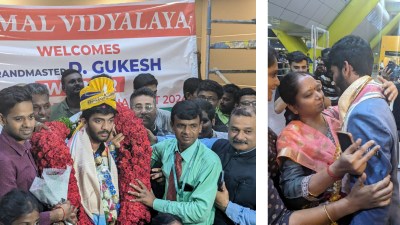- India
- International
A century of reform
The Dravidian movement has left its progressive imprint on Tamil Nadu.
 Few of those who made significant contributions to the Dravidian movement.
Few of those who made significant contributions to the Dravidian movement.
On November 20, 1916, Sir P. Theagaraya Chetty presided over a meeting at the Victoria Memorial Hall in Madras. It was the coming together of the Madras Presidency’s leading non-Brahmin traders, lawyers, doctors, landowners, and politicians. That moment is considered by most historians to be the birth of the Dravidian movement, which set the agenda for the next 100 years of politics in Tamil Nadu, and led the way for the mobilisation of marginalised peoples across the country .
The over-representation of Brahmins in the British Raj bureaucracy, as established by the census results, led to discontent amongst the lower castes. The November 1916 gathering was the first congregation of the backward classes to affirm their political power. On that day, the South Indian Liberal Federation, later known as the Justice Party, was founded.
The elections to the Madras Presidency, under the new dyarchy system in 1920, saw the Justice Party win a comfortable majority. In 1921, the Justice Party government passed the Communal Government Order No 613 to legislate reservations for various communities in government jobs, a first for any elected government in the country. Soon after, the Justice Party government amended the Government of India Act, 1919 to enable India’s woman legislator — Muthulakshmi Reddy — to be elected to the Madras Presidency. In order to curb caste-based discrimination under the guise of religion, Hindu temples were brought under the control of the state government through another legislation. The first Justice Party government, thus, made some of the longest strides in the empowerment of oppressed people.
In a parallel setting, Periyar E.V. Ramasamy was ploughing a separate but equally determined battle against oppressive forces. He led the Vaikom struggle for lower caste Hindus to use the street adjacent to a Siva temple in the then princely state of Travancore in 1925, an act whose success reverberated across India. The Self Respect Movement, he founded, was radical in its thinking and action. Periyar advocated inter-caste (or, as he called them, “casteless”) marriage, women’s education, property rights for women and widow remarriage in a language that was both fiery and candid.
The imposition of Hindi by the Madras Presidency government in 1937 brought the Justice Party and the Self Respect Movement together in opposition. In December 1938, Periyar,already a popular leader, became the president of the Justice Party. At the 16th Conference of the Justice Party, held on August 21, 1944, in Salem, it was renamed Dravidar Kazhagam to include all the linguistic peoples of Southern India, assert their ethnic identity and also to launch the demand for a separate Dravida Nadu.

While the Dravidar Kazhagam was a potent force for social change, a splinter group led by C.N. Annadurai aspired to get involved directly with the politics of the newly-independent country. In 1949, the Dravida Munnetra Kazhagam was formed with the objective of converting social reforms into administrative action. Since 1967, when the DMK formed a government in Tamil Nadu, the social reform agenda has been at the heart of the state’s governance. Self respect marriages that shunned caste and religious customs were legalised by the DMK in 1967. Madras became Tamil Nadu in 1969. Women were given equal succession rights in 1989. Inter-caste housing communities (samathuvapurams) were created by the state in 1998. Legislation to tear down caste barriers within priesthood was passed in 2006. Mid-day meals, maternity benefits, and women self-help groups can all be traced back to the early policy platforms of the Dravidian movement.
Today, in its centenary year, there is much to be thankful for the Dravidian Movement. Tamil Nadu continues to be ranked among the best states in the country in human development indicators. However, the next 100 years of the Dravidian Movement will witness bigger challenges in the form of caste and “honour”-based crimes, religious bigotry and social disparities that have shown a resurgence in recent times. The future of the Dravidian Movement lies in how its present-day successors find common cause in a society where identities have begun to trump ideologies. Still, the Dravidian movement must be celebrated for being the first backward class mobilisation in the country which has created historic social change and political empowerment.
EXPRESS OPINION
More Explained
Apr 25: Latest News
- 01
- 02
- 03
- 04
- 05











































